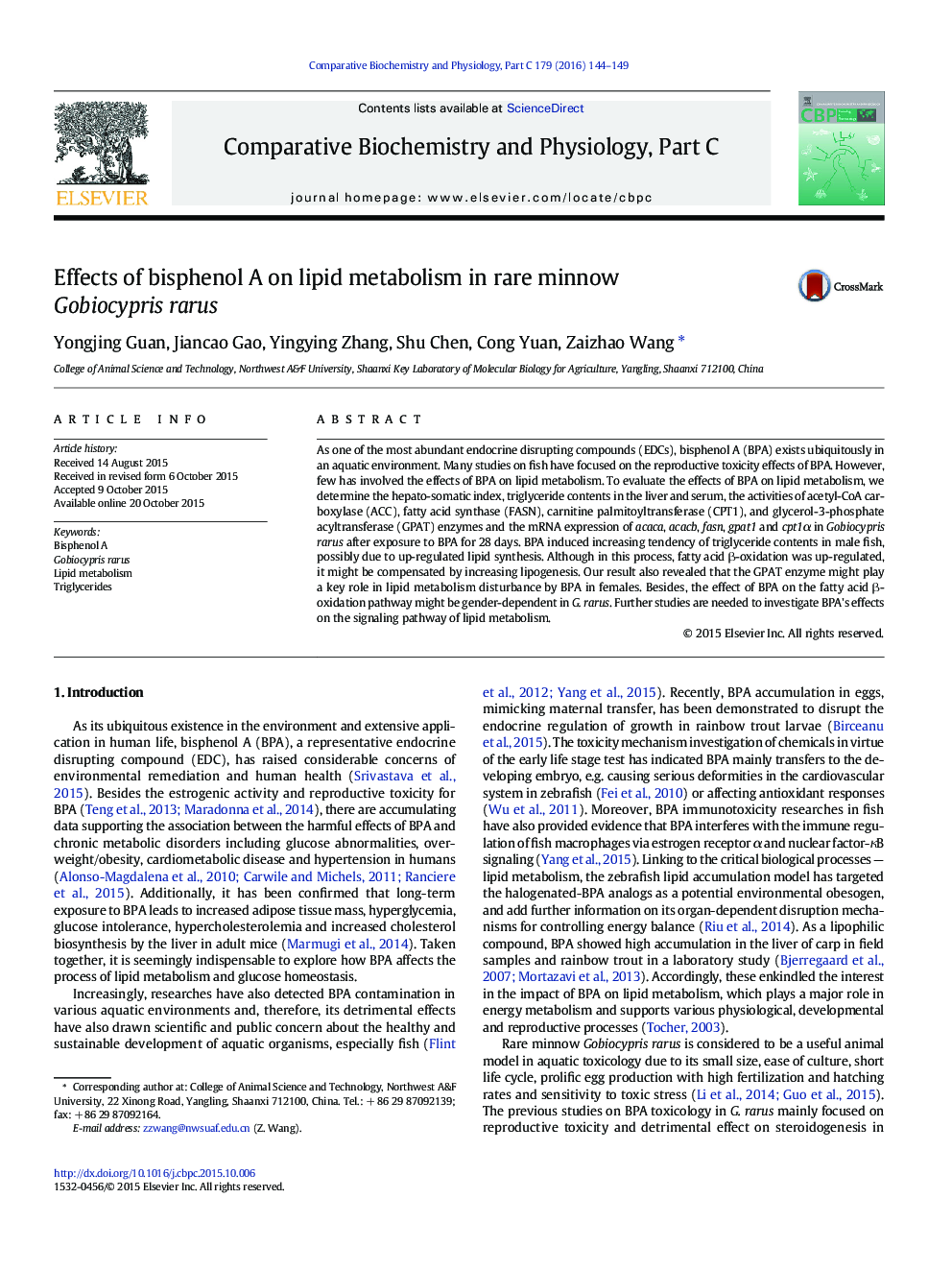| Article ID | Journal | Published Year | Pages | File Type |
|---|---|---|---|---|
| 1977176 | Comparative Biochemistry and Physiology Part C: Toxicology & Pharmacology | 2016 | 6 Pages |
Abstract
As one of the most abundant endocrine disrupting compounds (EDCs), bisphenol A (BPA) exists ubiquitously in an aquatic environment. Many studies on fish have focused on the reproductive toxicity effects of BPA. However, few has involved the effects of BPA on lipid metabolism. To evaluate the effects of BPA on lipid metabolism, we determine the hepato-somatic index, triglyceride contents in the liver and serum, the activities of acetyl-CoA carboxylase (ACC), fatty acid synthase (FASN), carnitine palmitoyltransferase (CPT1), and glycerol-3-phosphate acyltransferase (GPAT) enzymes and the mRNA expression of acaca, acacb, fasn, gpat1 and cpt1α in Gobiocypris rarus after exposure to BPA for 28 days. BPA induced increasing tendency of triglyceride contents in male fish, possibly due to up-regulated lipid synthesis. Although in this process, fatty acid β-oxidation was up-regulated, it might be compensated by increasing lipogenesis. Our result also revealed that the GPAT enzyme might play a key role in lipid metabolism disturbance by BPA in females. Besides, the effect of BPA on the fatty acid β-oxidation pathway might be gender-dependent in G. rarus. Further studies are needed to investigate BPA's effects on the signaling pathway of lipid metabolism.
Related Topics
Life Sciences
Biochemistry, Genetics and Molecular Biology
Biochemistry
Authors
Yongjing Guan, Jiancao Gao, Yingying Zhang, Shu Chen, Cong Yuan, Zaizhao Wang,
